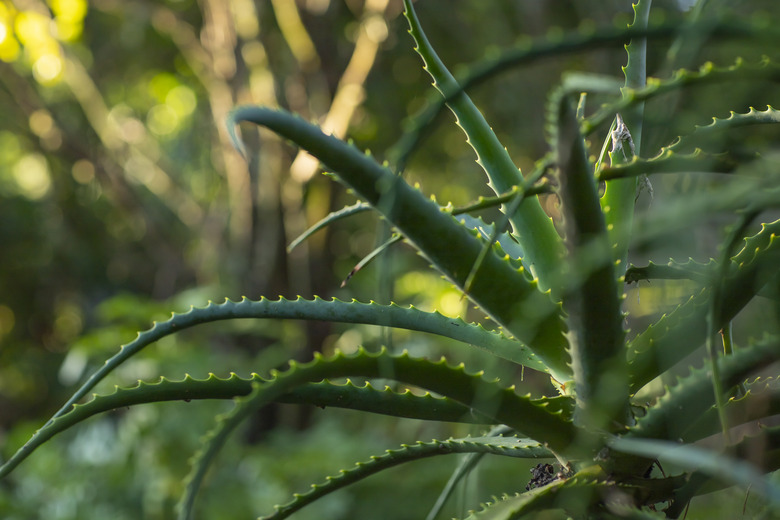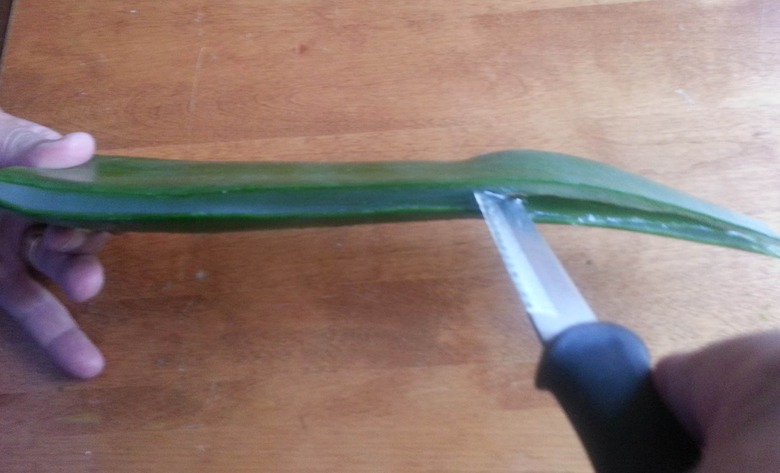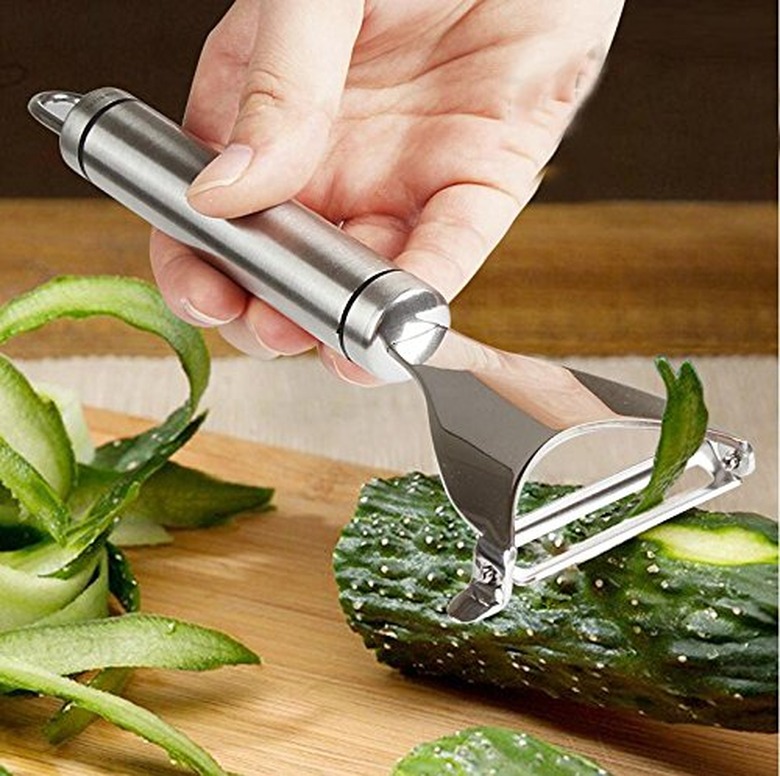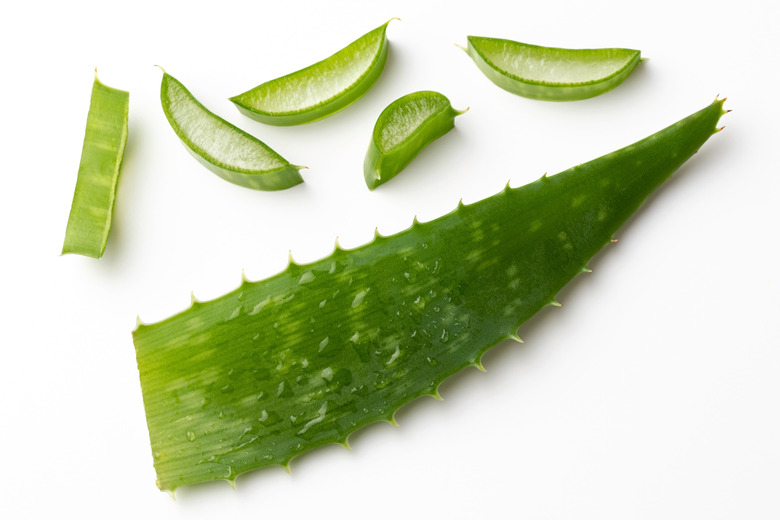How To Extract Aloe From Aloe Vera Plants
The benefits of the aloe vera plant are well known and have been known for centuries. If you don't happen to be familiar with them, here are a few, as listed by Medical News Today:
- Aloe gel contains a healthy mixture of vitamins, minerals and amino acids. In particular, it contains polyphenols, which are some of the most powerful antioxidants found in nature.
- Aloe juice has laxative properties, and it prevents tooth plaque as effectively as chlorhexidine, the standard bacteria-fighting chemical found in commercial mouthwash.
- Aloe gel treats burns, mouth cankers and dry skin.
- Aloe juice can lower blood sugar levels and can be helpful for people with diabetes.
The part of the aloe plant with the medicinal properties is the gel contained inside the large, spiny leaves. The plant is easy to grow and maintain, and to extract the gel, all you have to do is cut a leaf open. However, if you want to extract gel efficiently and get as much as you can from each leaf, you need a more complex method.
The "Fish Filet" Method for Extracting Aloe
The "Fish Filet" Method for Extracting Aloe
Perhaps the most common way to extract aloe is to cut the leaf in half lengthwise, much as you would a fish you are about to fry. Once the inside of the leaf is exposed, you can use a knife or spoon to scrape the gel from the hard leaf casing.
But there are two problems with this method. The first is that large leaves are tough and difficult to handle, given that they are shaped irregularly and covered in spines. You need a large, sharp knife to cut them, and it's easy to slip and cut yourself.
The other problem is that each leaf has a thin layer of latex between the outside casing and the gel. If you scrape the gel, you're bound to get some of the latex with it. This yellowish sap has strong laxative properties, and if you're planning on juicing the gel to lower blood sugar or calm your stomach, you'll probably want to avoid including this sap in your juice. Use another method to extract the gel. On the other hand, if you're ingesting the aloe specifically to relieve constipation, which is one of the reasons people use this medicinal plant, you want as much of the sap as possible, so scrape as close to the leaf casing you can.
Extract Aloe with a Fruit Peeler
Extract Aloe with a Fruit Peeler
A fruit peeler can remove the peel from an apple or cucumber in short order, and it can also expose the gel in an aloe leaf. If you use this method, start by using a sharp knife to cut the spines off the leaf after you've harvested it from the plant and washed it in clean water. Hold the clean and de-spined leaf flat on the table and draw the peeler along its surface, away from you, removing just enough of the leaf covering to expose the gel. This method is more precise than using a knife or spoon to scrape gel, because you can control how much of the casing you remove. When you're done peeling, rinse the gel in clean water twice to wash off any latex sap you didn't remove with the peeler, if removing the sap is important.
Slice, Dice and Squeeze to Extract Aloe Gel
Slice, Dice and Squeeze to Extract Aloe Gel
If you need aloe to treat a burn or a sore on your body, you don't have to go to great lengths to extract it. Simply cut a leaf crosswise into small sections, then squeeze out the aloe into a bowl or into your hands. In a pinch, you can even use one of the cut-off sections to apply aloe directly to the part of your body that needs it.
If you aren't in a hurry, you can use what is probably the easiest extraction method of all: Cut a leaf into three or four smaller sections and let each section stand upright over a bowl for a few hours. The gel will drain into the bowl all by itself. Once you remove the gooey, yellowish latex, you can use the gel for cooking, or you can put it in a blender to create a frothy mixture that you can drink or incorporate into lotions or body rubs.



